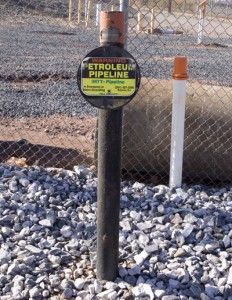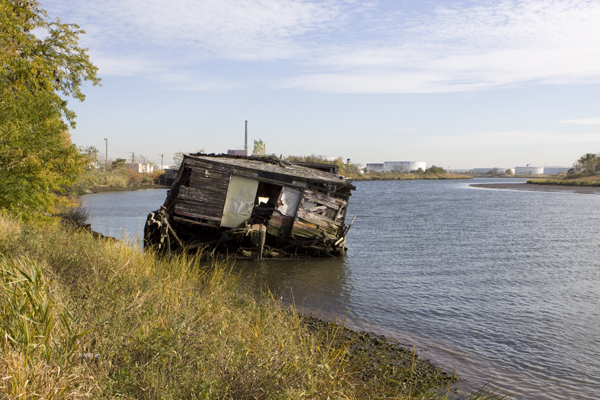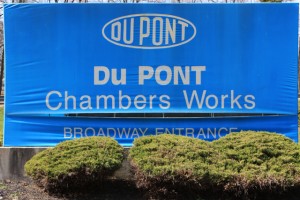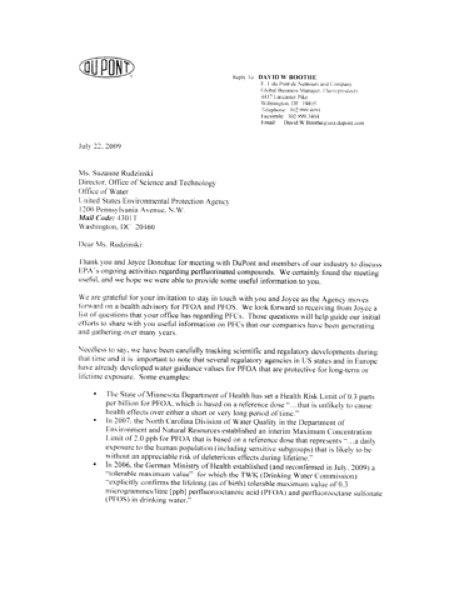Pigs in Linden, NJ

Buckeye Pipeline, Linden NJ
Beasts of England, beasts of Ireland,
Beasts of every land and clime,
Hearken to my joyful tidings
Of the golden future time. ~~~~ George Orwell
This is a metaphorical and yet literal story about pigs – we’ll let the reader discern metaphor from fact – noun from verb.
Pigs were the “state of the art” in garbage disposal in 1930. Few people understand that back then, many U. S. cities still saved their garbage for pig slopping – despite the well-known relationship between trichinosis and garbage-fed pigs. When driving past Secaucus, New Jersey, the recipient of New York City’s garbage, one had to roll up one’s car windows to avoid the ghastly smell of the pig farms as late as the 1940s.
I recently traveled to Tremley Point in Linden NJ to take some photographs to support the work of the coalition opposing the proposed $5 billion “PurGen” coal plant.

ISP (former GAF) toxic site, adjacent to Dupont toxic site of proposed PurGen coal plant, Linden NJ. What is in those piles?

Exxon Bayway Refinery, Linden, NJ
Needless to say, shortly after I got off Route 1 on the way out to Tremley Point, despite the nice new ramps on the Turnpike at Exit 12, I realized that I was in the belly of some form of beast.

Linden Landfill
I got out of my car, to take some shots of the neighborhood.

Park surrounded by oil tank farm and refinery - is that an untarped toxic soil pile?

Good thing I didn't bring my dog. Do the oil companies cleanup their mess like a "pooper scooper" law?

Having a smoke on the porch or in the backyard could get you killed.

National oil and gas pipelines end in Linden
Of course, seeing that I was in a federal Homeland Security Zone, the local police swooped in to question me. This time, I was greeted by a professional and friendly cop. After I explained my mission, he explained the critical infrastructure we were virtually standing on. It turns out – after I asked about all the smoke coming from behind the Public Works yard where they park the garbage trucks (across from the park and swingset) – the policeman explained that Linden is the terminus of national oil and gas pipelines. He went on to mention the practice of “blowing out the pig“.
It sounded polluting and unsafe – and I wondered why they didn’t blow out the pig back in Texas or Ohio or wherever the oil and gas lines come here from.
According to the Wikipedia entry on “pigging“:
“… cleaning pigs push contaminants from the pipeline such as wax, foreign objects, hydrates, etc, which must be removed from the pipeline. There are inherent risks in opening the barrel to atmosphere and care must be taken to ensure that the barrel is depressured prior to opening. If the barrel is not completely depressured, the pig can be ejected from the barrel and operators have been severely injured when standing in front of an open pig door. When the product is sour, the barrel should be evacuated to a flare system where the sour gas is burnt. Operators should be wearing a self-contained breathing apparatus when working on sour systems.“
So, in addition to all the industrial pollution sources that make Linden an environmental justice community, we now learn that there are pigs in Linden.
And I thought that NJ had ended the gross, unhealthy and embarrassing practice of using pigs to manage waste:
“According to state estimates, New Jersey pigs consume 1,500 tons of garbage a week – about the same as a small trash-to-steam plant. Much of it comes from Philadelphia, which has contracted with about 20 pig farmers, who collect an estimated 30,000 tons of garbage a year.”
(see: “Pigging Out“, Philadelphia Inquirer)

just another pipeline in Linden

Ship of State - Linden, NJ along Arthur Kill



 Due to a lack of disclosure of these kinds of political lobbying efforts by Dupont, the public and independent scientists have no effective way of knowing about or rebutting these behind the scenes interventions.
Due to a lack of disclosure of these kinds of political lobbying efforts by Dupont, the public and independent scientists have no effective way of knowing about or rebutting these behind the scenes interventions.
